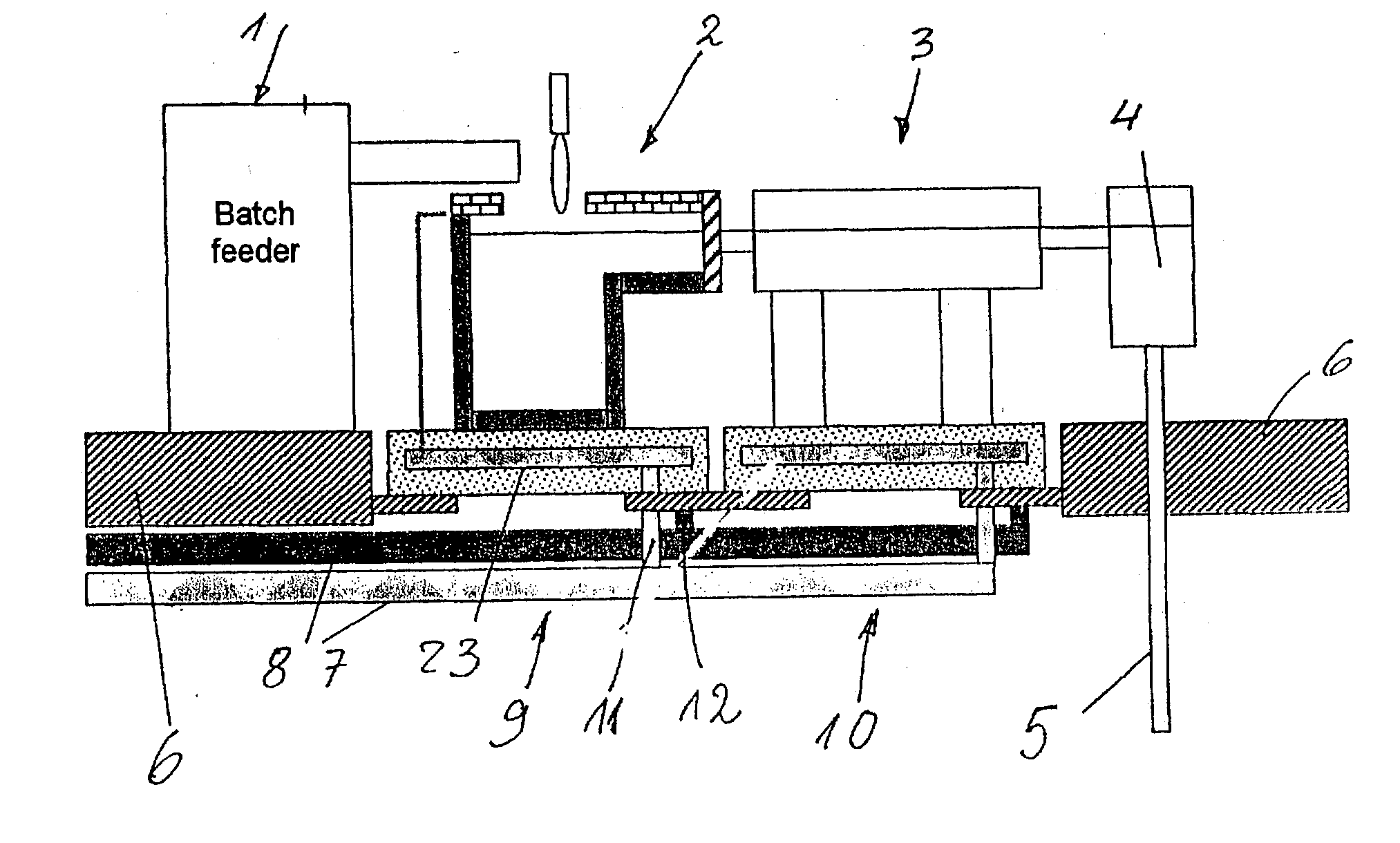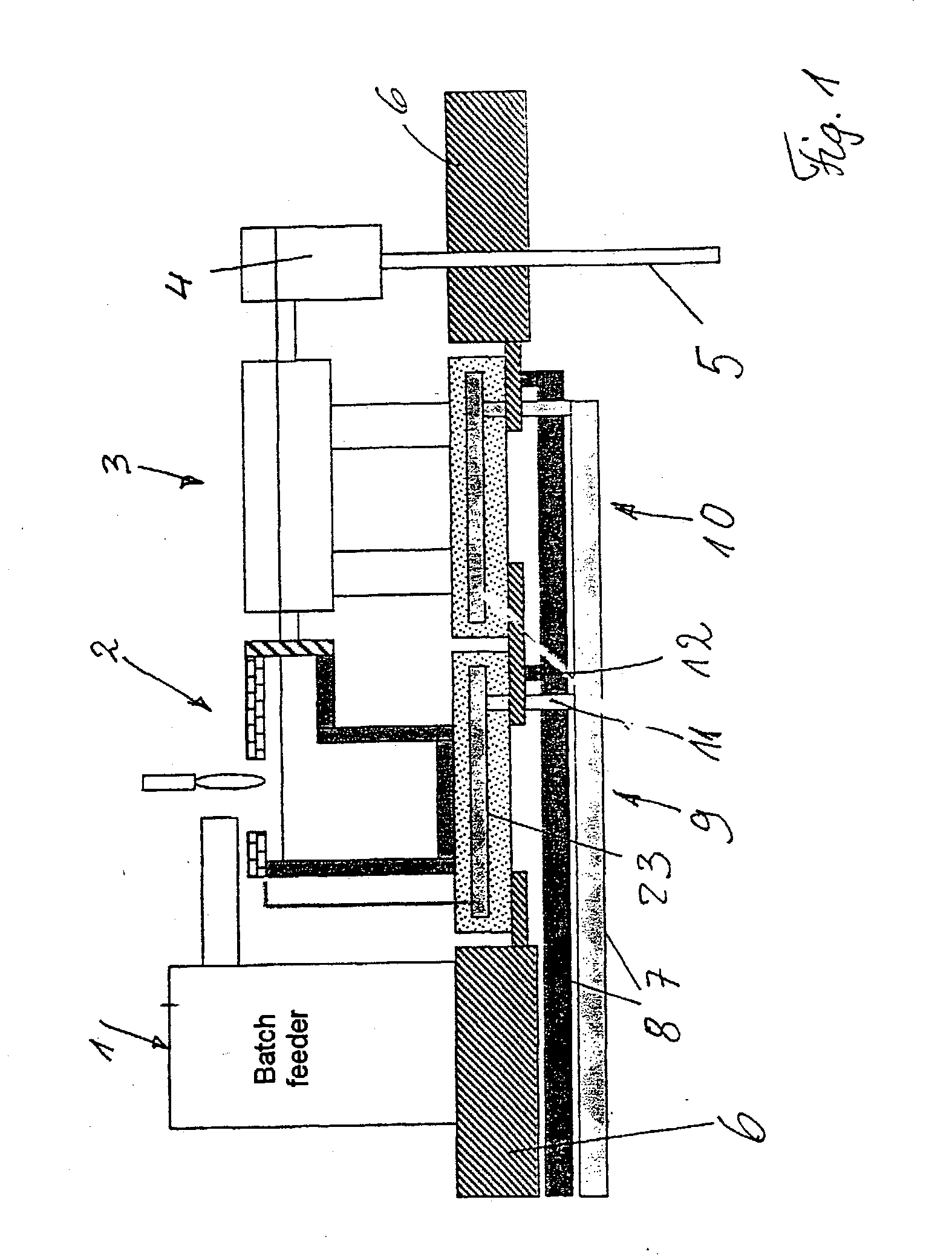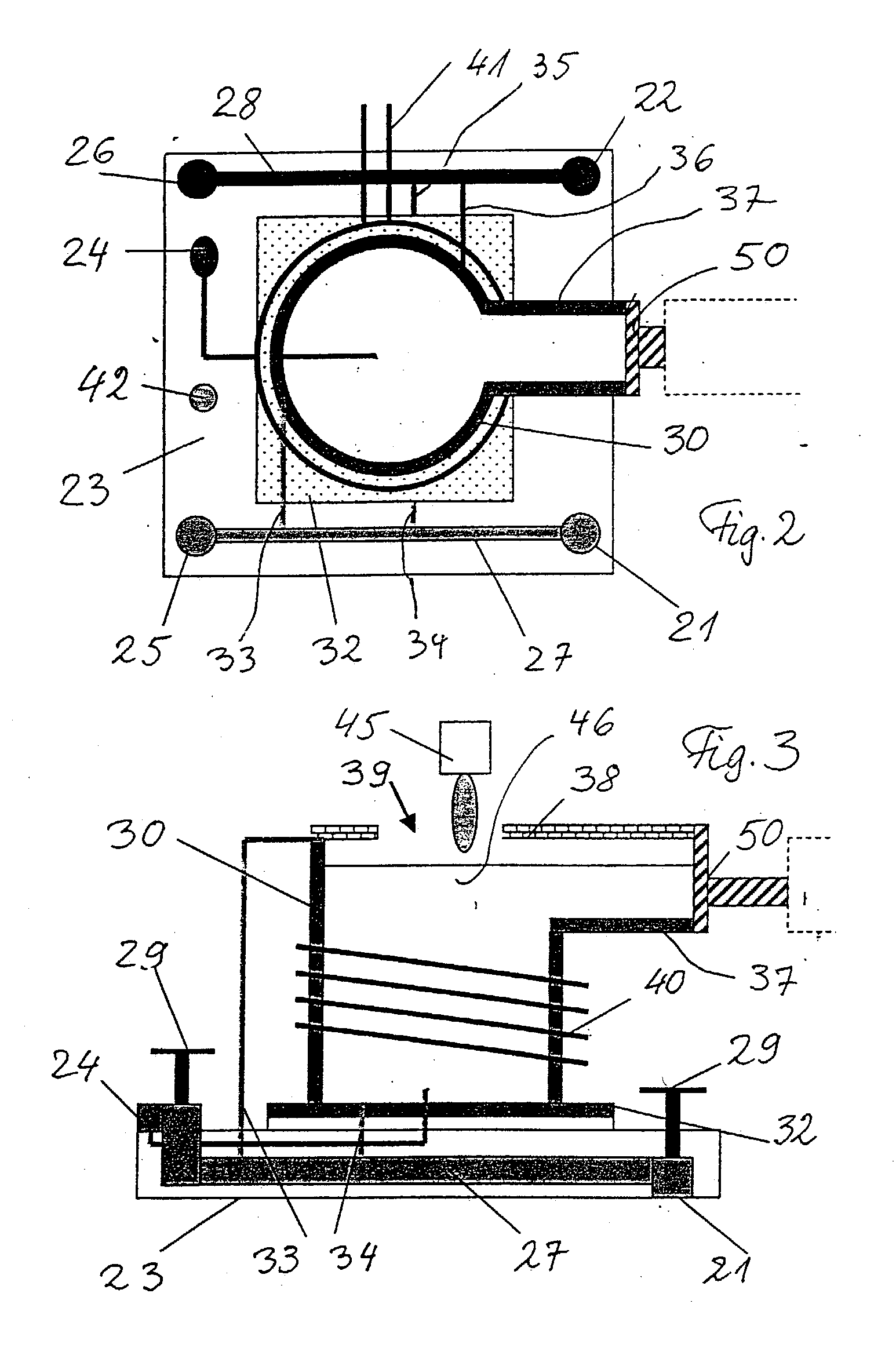Method for changing glass compositions in melting installations, and corresponding melting installation
a technology for glass compositions and melting installations, applied in glass blowing equipment, glass shaping equipment, furnace types, etc., can solve the problems of density delay the melt changeover operation, and large number of melting installations. , to achieve the effect of small melting volume, easy change, and low cos
- Summary
- Abstract
- Description
- Claims
- Application Information
AI Technical Summary
Benefits of technology
Problems solved by technology
Method used
Image
Examples
application example
[0053]
[0054] Melt changeover by changing the melting-down crucible is of particular interest for use with colored glasses. With colored glasses, the melt changeover operation is complicated by the fact that, on the one hand, it takes a very long time for the remainder of the original glass to be discharged from the melting unit, in particular when changing from dark glasses to light glasses. On the other hand, with conventional burner heating, there are problems with the different absorption of radiation by the different colored glasses. In the case of the melt changeover of colored glasses by means of the HF technique, given sufficient conductivity of the glasses it is not expected that there will be any significant differences in the melting performance, even if the color of the glasses is very different. Changing the melting-down unit means that there is only a small volume which has to be exchanged. Consequently, the melt changeover time is significantly shortened.
PUM
| Property | Measurement | Unit |
|---|---|---|
| Electrical conductivity | aaaaa | aaaaa |
| Size | aaaaa | aaaaa |
| Frequency | aaaaa | aaaaa |
Abstract
Description
Claims
Application Information
 Login to View More
Login to View More - R&D
- Intellectual Property
- Life Sciences
- Materials
- Tech Scout
- Unparalleled Data Quality
- Higher Quality Content
- 60% Fewer Hallucinations
Browse by: Latest US Patents, China's latest patents, Technical Efficacy Thesaurus, Application Domain, Technology Topic, Popular Technical Reports.
© 2025 PatSnap. All rights reserved.Legal|Privacy policy|Modern Slavery Act Transparency Statement|Sitemap|About US| Contact US: help@patsnap.com



